
Majestic Borgarfjörður: Iceland's Hidden Gem
Discover Borgarfjörður: A blend of breathtaking landscapes, rich history, and outdoor adventures in Iceland's enchanting western region.
Nestled in the heart of western Iceland, Borgarfjörður is a region that effortlessly blends natural beauty with rich history. This captivating destination is famed for its stunning landscapes, including vast lava fields, cascading waterfalls, and striking mountains. Visitors are often enchanted by the serene fjord waters that reflect the sky's ever-changing colors, creating a picturesque backdrop for memorable adventures. Borgarfjörður is also steeped in folklore and history. The area is home to Reykholt, the historical village where the famous medieval scholar Snorri Sturluson once lived. His legacy remains alive through the Snorrastofa museum, where visitors can learn about Icelandic sagas and medieval literature. Additionally, the region's geothermal activity is showcased at Deildartunguhver, Europe's most powerful hot spring, whose warm waters provide a unique bathing experience. Outdoor enthusiasts will find Borgarfjörður a paradise. Hiking trails meander through lush valleys and up to panoramic viewpoints, while rivers like Hvítá offer thrilling opportunities for fishing and rafting. The enchanting Hraunfossar and Barnafoss waterfalls are must-see natural wonders, with their crystal-clear waters flowing from beneath lava fields. For a touch of mystique, visitors can explore the Víðgelmir lava cave, one of Iceland's largest and most impressive lava tubes.
Local tips in Borgarfjörður
- Pack layers of clothing. Iceland's weather can change rapidly, so it's essential to be prepared for all conditions.
- Visit in the summer months to experience the midnight sun, which provides extended daylight for exploration.
- Rent a car for the most flexibility in exploring the diverse landscapes and hidden spots of Borgarfjörður.
- Don't miss out on local cuisine. Try traditional Icelandic dishes like lamb stew and fresh seafood in local restaurants.
- Respect nature. Stick to marked paths to preserve the delicate environment and ensure your safety.
Majestic Borgarfjörður: Iceland's Hidden Gem
Nestled in the heart of western Iceland, Borgarfjörður is a region that effortlessly blends natural beauty with rich history. This captivating destination is famed for its stunning landscapes, including vast lava fields, cascading waterfalls, and striking mountains. Visitors are often enchanted by the serene fjord waters that reflect the sky's ever-changing colors, creating a picturesque backdrop for memorable adventures. Borgarfjörður is also steeped in folklore and history. The area is home to Reykholt, the historical village where the famous medieval scholar Snorri Sturluson once lived. His legacy remains alive through the Snorrastofa museum, where visitors can learn about Icelandic sagas and medieval literature. Additionally, the region's geothermal activity is showcased at Deildartunguhver, Europe's most powerful hot spring, whose warm waters provide a unique bathing experience. Outdoor enthusiasts will find Borgarfjörður a paradise. Hiking trails meander through lush valleys and up to panoramic viewpoints, while rivers like Hvítá offer thrilling opportunities for fishing and rafting. The enchanting Hraunfossar and Barnafoss waterfalls are must-see natural wonders, with their crystal-clear waters flowing from beneath lava fields. For a touch of mystique, visitors can explore the Víðgelmir lava cave, one of Iceland's largest and most impressive lava tubes.
When is the best time to go to Borgarfjörður?
Iconic landmarks you can’t miss
Hallgrimskirkja
Explore Hallgrimskirkja, Reykjavik's iconic church, blending stunning architecture and breathtaking views in the heart of Iceland's capital city.
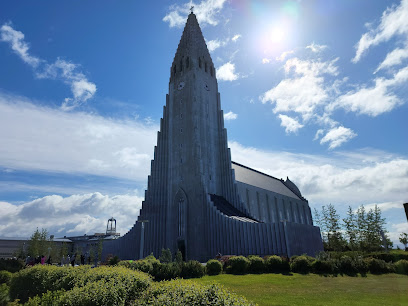
Perlan
Explore Perlan: Reykjavik's natural history museum with stunning views, a planetarium, and a delightful restaurant experience.

Deildartunguhver
Explore Deildartunguhver, Iceland's most powerful hot spring, where nature's geothermal wonders await your discovery in stunning landscapes.

Barnafoss
Discover the enchanting Barnafoss waterfall in Iceland, where stunning blue waters flow through rugged landscapes steeped in folklore.

The Settlement Center
Explore the captivating Viking history of Iceland at The Settlement Center, an interactive museum experience in Borgarnes, perfect for all ages.

Saga Museum
Explore Iceland's rich Viking history at the Saga Museum in Reykjavik, where captivating exhibits bring ancient sagas to life.

Lögberg
Explore Lögberg, the historic Law Rock in Thingvellir, where Iceland's ancient parliament convened amidst stunning natural beauty.

Gatklettur
Discover Gatklettur, a breathtaking natural arch in Iceland's stunning landscapes, where adventure and serenity meet for every traveler.

Höfði House
Discover the historical significance of Höfði House in Reykjavik, a landmark of diplomacy and stunning architecture surrounded by beautiful gardens.

The Settlement Exhibition
Discover the roots of Icelandic culture at The Settlement Exhibition, where Viking history and ancient artifacts come to life in Reykjavik.

Old Akranes Lighthouse
Explore the historic Old Akranes Lighthouse, a unique Icelandic landmark with stunning coastal views and rich maritime heritage.

Árbær Open Air Museum
Explore Iceland's cultural history at Árbær Open Air Museum, featuring historic buildings, engaging exhibits, and a delightful toy museum in Reykjavík.

Gerðuberg Cliffs
Explore Gerðuberg Cliffs, Iceland's stunning geological marvel with breathtaking basalt columns and scenic hiking trails.

Þúfa
Discover Þúfa, a stunning natural mound in Reykjavik offering panoramic views, artistic landscapes, and serene walking paths.
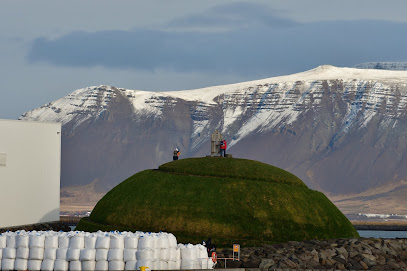
The Commonwealth farm
Explore the rich cultural heritage of Iceland at The Commonwealth Farm, a local history museum celebrating 1100 years of settlement.

Unmissable attractions to see
The Icelandic Phallological Museum (Hið Íslenzka Reðasafn)
Discover the quirkiest museum in Reykjavik, showcasing a diverse collection of phallic specimens and cultural artifacts in a humorous yet educational setting.

Old Akranes Lighthouse
Discover the Old Akranes Lighthouse, a historic landmark offering breathtaking coastal views and a glimpse into Iceland's maritime heritage.

Skarfabakki Harbour
Explore Skarfabakki Harbour: Your gateway to Icelandic adventures and breathtaking coastal beauty in Reykjavík.

12 Tónar
Experience the musical heartbeat of Reykjavik at 12 Tónar, where vinyl records, live music, and a cozy atmosphere come together in perfect harmony.

Laugardalsvöllur
Dive into the excitement at Laugardalsvöllur, Iceland's premier stadium for soccer and vibrant sporting events, located in the heart of Reykjavik.

Fossarétt
Discover the breathtaking beauty of Fossarétt, a serene tourist attraction in Reynivellir, Iceland, perfect for nature lovers and adventure seekers.

Recycled House
Explore the Recycled House in Reykjavík, a stunning example of sustainable architecture made from recycled materials, perfect for eco-conscious travelers.
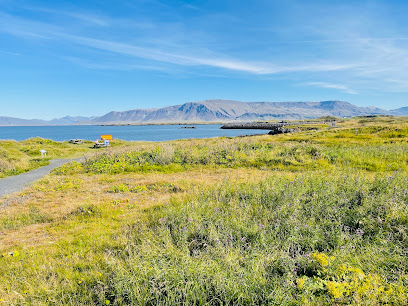
Ljómalind Local Market
Discover the essence of Iceland at Ljómálind Local Market, where local produce meets artisanal craftsmanship in a vibrant atmosphere.

Volcano House, Iceland
Explore the captivating world of Iceland's volcanoes at Volcano House, a unique movie theater and museum experience in Reykjavik.

Litla Jólabúðin
Explore Litla Jólabúðin, Reykjavik's enchanting Christmas store, filled with unique decorations and gifts that capture the holiday spirit year-round.

Höfði Lighthouse
Explore the scenic beauty and rich history of Höfði Lighthouse, a charming Icelandic landmark perfect for photography and relaxation along the coast.

Bjössaróló Playground
Explore the enchanting Bjössaróló Playground in Borgarnes, Iceland, where adventure and family fun await in a stunning natural setting.

Akranesviti
Discover the stunning Akranesviti lighthouse in Iceland, a captivating blend of natural beauty and maritime history, perfect for every traveler.

Maríuhellar
Discover the serene beauty of Maríuhallar in Garðabær, where Iceland's natural landscapes meet the charm of urban life.

Hallsteinsgarður - Sculpture Park
Explore Hallsteinsgarður, Reykjavik's enchanting sculpture park featuring modernist art set against Iceland's breathtaking landscapes.

Essential places to dine
Bjargarsteinn Mathús
Experience authentic Icelandic cuisine at Bjargarsteinn Mathús in Grundarfjörður, where local flavors meet breathtaking views.
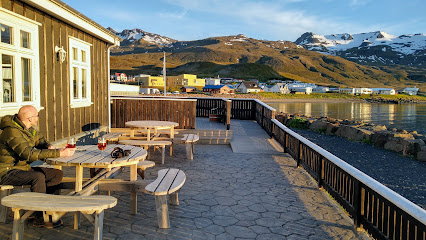
La Colina Pizzeria
Experience the best of Borgarnes at La Colina Pizzeria with authentic pizzas made from fresh ingredients in a cozy setting.

Matur og Drykkur
Experience authentic Icelandic cuisine at Matur og Drykkur in Reykjavík - where tradition meets modern culinary artistry.

Harbour Cafe
Experience authentic Icelandic cuisine at Harbour Cafe in Grundarfjörður, where local flavors meet breathtaking views.

Rock´n´ Troll Café (Fossatún Country Hotel)
Discover Rock'n' Troll Café: A culinary gem in Iceland offering local flavors amidst stunning natural landscapes.

Englendingavík
Discover authentic Icelandic flavors at Englendingavík, where local ingredients meet traditional recipes in a warm and welcoming atmosphere.

B59 Hótel
Discover comfort and culinary delights at B59 Hótel in Borgarnes – your gateway to Icelandic adventures.

Hverinn - Restaurant & Bar
Experience the best of Icelandic cuisine at Hverinn - Restaurant & Bar in Kleppjárnsreykir, where flavor meets comfort in an unforgettable setting.

Grillhúsið Borgarnesi
Experience authentic Icelandic flavors at Grillhúsið Borgarnesi – where every meal tells a story through local ingredients and tradition.

Bara Borgarnes
Experience authentic Icelandic cuisine and local art at Bara Borgarnes – where dining meets culture in the heart of Borgarnes.

Hótel Laxárbakki
Experience unparalleled comfort and authentic Icelandic cuisine at Hótel Laxárbakki in Akranes - your gateway to exploring North West Iceland's stunning landscapes.

A.Hansen Restaurant & Bar
Discover A.Hansen Restaurant & Bar in Hafnarfjörður for an unforgettable taste of Icelandic cuisine amidst warm hospitality.

Staldrið Food Truck
Experience authentic Icelandic flavors at Staldrið Food Truck in Kleppjárnsreykir—delicious hot dogs and sandwiches await!

Baulan
Experience delicious comfort food at Baulan Diner in Iceland - your perfect stop for hearty meals and convenience on your journey.

La Primavera Ristorante
Experience authentic Italian cuisine at La Primavera Ristorante in Reykjavík – where tradition meets taste.

Markets, malls and hidden boutiques
Blómasetrið - Kaffi Kyrrð
Discover a charming gift shop and café in Borgarnes, Iceland, where local art meets cozy ambiance, perfect for relaxation and unique finds.

Bónus
Discover local flavors and budget-friendly groceries at Bónus, the top discount supermarket in Borgarnes, Iceland.

Nettó
Explore the heart of Borgarnes at Nettó, your friendly neighborhood supermarket offering local Icelandic products and essentials.

Polarbear Gift Store
Explore Polarbear Gift Store for unique Icelandic souvenirs and gifts that embody the beauty of your travels.
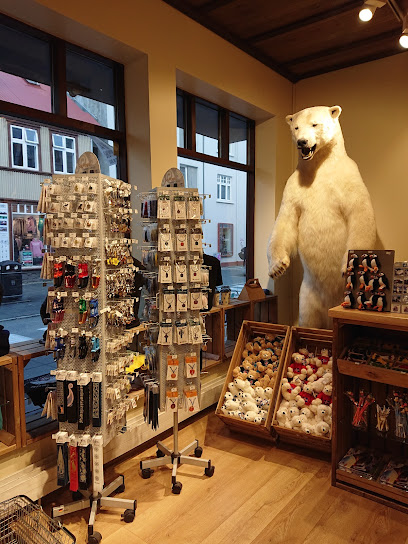
Vínbúðin
Discover Iceland's rich beverage culture at Vínbúðin, the state liquor store in Borgarnes, offering a diverse selection of wines, spirits, and local brews.
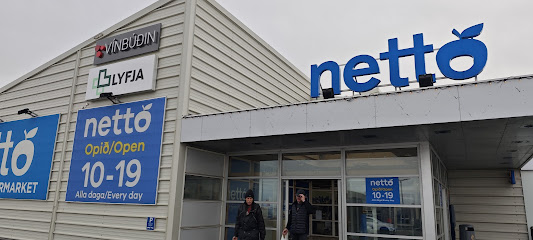
Ullarselið - Wool Centre
Discover the artistry of Icelandic wool at Ullarselið - Wool Centre, where tradition meets craftsmanship in every stitch.

Lundinn
Explore Lundinn, Reykjavík's charming gift basket store, offering a taste of Icelandic culture through unique souvenirs and artisanal delights.

Thorvaldsens Bazar
Explore the unique Icelandic craftsmanship at Thorvaldsens Bazar, a boutique offering handmade souvenirs and local art in Reykjavík.

Hyrnan
Discover the convenience of Hyrnan in Borgarnes, Iceland, where you can find local snacks, essentials, and friendly service for all your travel needs.

Saga Store
Explore the heart of Reykjavík at Saga Store, where authentic Icelandic souvenirs meet local craftsmanship and vibrant culture.

Lífland
Discover Lífland in Borgarnes, where equestrian dreams come true and pet supplies meet quality service in Iceland's rural beauty.

Svartbysvart & Friends
Discover Icelandic artistry at Svartbysvart & Friends, the ultimate boutique for unique gifts, candles, clothing, and jewelry in Reykjavík.

Ungfrúin góða
Explore Ungfrúin góða for exclusive Icelandic gifts, fashion accessories, and quality leather goods in the heart of Reykjavík.

Borgarsport
Explore the best of outdoor adventures at Borgarsport, your premier sporting goods store in Borgarnes, Iceland.

Gleym mér ei
Explore Gleym mér ei, a serene garden center in Borgarnes, offering a vibrant variety of plants and a tranquil escape into nature's beauty.

Essential bars & hidden hideouts
Íslenski barinn
Discover the heart of Icelandic cuisine and vibrant nightlife at Íslenski Barinn, Reykjavík's top destination for local flavors and warm hospitality.

Lebowski Bar
Discover the quirky charm of the Lebowski Bar in Reykjavík, where movie nostalgia meets vibrant nightlife and delicious drinks.

Bastard Brew & Food
Experience the best of Reykjavík's craft brews and innovative dishes at Bastard Brew & Food, a must-visit brewpub for every traveler.

Sæta Svínið Gastropub
Experience a unique blend of traditional Icelandic cuisine and contemporary dining at Sæta Svínið Gastropub in Reykjavík.

American Bar
Experience the vibrant grill scene at American Bar in Reykjavík, where delicious meals and a lively atmosphere await every visitor.

Bryggjan Brugghús
Experience the essence of Icelandic brewing and cuisine at Bryggjan Brugghús, where craft beers meet gourmet dishes in a stunning waterfront setting.
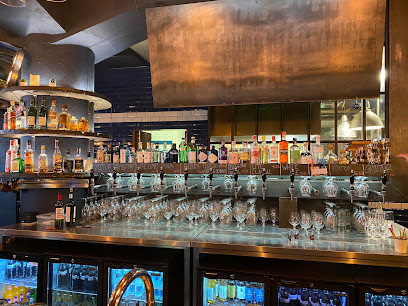
Dillon Whiskey Bar
Dillon Whiskey Bar: A lively bar combining whiskey, karaoke, and live music in the heart of Reykjavík, perfect for a memorable night out.

The Drunk Rabbit Irish Pub
Experience the warmth of Irish culture at The Drunk Rabbit Pub, where good food, great drinks, and lively entertainment await in Reykjavík.

Prikið ehf.
Experience the heart of Reykjavík at Prikið, where delicious brunch meets vibrant live music in a cozy bar setting.

Frederiksen Ale House
Discover the vibrant atmosphere of Frederiksen Ale House, offering a wide selection of craft beers and a lively social scene in the heart of Reykjavík.

Bravó
Immerse yourself in the vibrant nightlife of Reykjavík at Bravó, the perfect cocktail bar for music lovers and socializers.
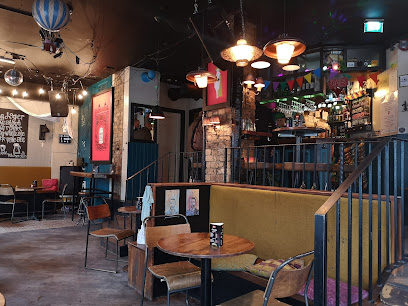
SKY Bar
Experience the vibrant nightlife of Reykjavík at SKY Bar, where stunning views and expertly crafted cocktails come together for an unforgettable evening.

Jungle Cocktail Bar
Experience the lively atmosphere and unique cocktails at the Jungle Cocktail Bar, a must-visit spot in Reykjavík for all cocktail enthusiasts.

Bara Borgarnes
Discover the cozy charm of Bara Borgarnes, where delightful comfort food meets a vibrant local culture in the heart of Iceland.
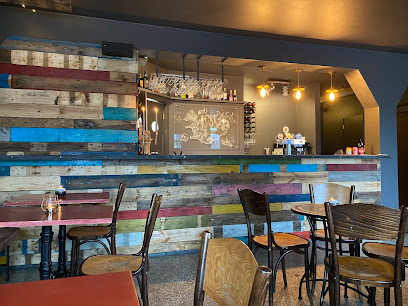
ÁLFACAFÉ
Discover the flavors of Iceland at ÁLFACAFÉ, a charming café in Borgarfjörður Eystri, perfect for relaxation and local cuisine.

Local Phrases about Borgarfjörður
-
- HelloHalló
[ha-tlo] - GoodbyeBless
[bless] - YesJá
[ya] - NoNei
[nay] - Please/You're welcomeGjörðu svo vel
[gyo-r-thu svo vel] - Thank youTakk
[tah-k] - Excuse me/SorryAfsakið
[af-sa-kith] - How are you?Hvernig hefur þú það?
[k-ver-nik he-vur thu thah-th] - Fine. And you?Í lagi. En þú?
[ee la-ghi. en thu] - Do you speak English?Talar þú ensku?
[ta-lar thu ens-koo] - I don't understandÉg skil ekki
[yeh skil ek-ki]
- HelloHalló
-
- I'd like to see the menu, pleaseÉg ætla að sjá matseðilinn, takk
[yeh ai-tla ath shau mat-se-thi-linn, tahk] - I don't eat meatÉg borða ekki kjöt
[yeh bor-tha ek-ki chot] - Cheers!Skál!
[skowl] - I would like to pay, pleaseÉg ætla að greiða, takk
[yeh ai-tla ath grey-tha, tahk]
- I'd like to see the menu, pleaseÉg ætla að sjá matseðilinn, takk
-
- Help!Hjálp!
[hyaalp] - Go away!Farðu í burtu!
[far-thu ee bur-thu] - Call the Police!Hringdu í lögregluna!
[hring-thu ee log-re-gluna] - Call a doctor!Hringdu í lækninn!
[hring-thu ee laik-nin] - I'm lostÉg er villtur
[yeh er vil-thur] - I'm illÉg er veikur
[yeh er vaik-ur]
- Help!Hjálp!
-
- I'd like to buy...Ég ætla að kaupa...
[yeh ai-tla ath koy-pa] - I'm just lookingÉg er bara að skoða
[yeh er ba-ra ath sko-tha] - How much is it?Hvað kostar það?
[kva-th kostar thah-th] - That's too expensiveÞað er of dýrt
[tha-th er ov deert] - Can you lower the price?Getur þú lækkað verðið?
[gethur thu lai-kath ver-thith]
- I'd like to buy...Ég ætla að kaupa...
-
- What time is it?Hvað er klukkan?
[kva-th er klu-khan] - It's one o'clockKlukkan er eitt
[klu-khan er ait] - Half past (10)Hálf tíu
[howlf tee-oo] - MorningMorgunn
[mohr-gun] - AfternoonSíðdegis
[seed-dey-ees] - EveningKvöld
[kvuhld] - YesterdayÍ gær
[ee gai-r] - TodayÍ dag
[ee thahg] - TomorrowÁ morgun
[ow mor-gun] - 1Eitt
[ait] - 2Tvö
[t-vuh] - 3Þrjú
[thry-yoo] - 4Fjögur
[f-yo-gur] - 5Fimm
[fimm] - 6Sex
[sehx] - 7Sjö
[syoh] - 8Átta
[ow-tha] - 9Níu
[nee-yu] - 10Tíu
[tee-oo]
- What time is it?Hvað er klukkan?
-
- Where's a/the...?Hvar er...
[kvar er] - What's the address?Hvað er heimilisfangið?
[kva-th er hay-mi-li-sfan-gith] - Can you show me (on the map)?Getur þú sýnt mér (á kortinu)?
[gethur thu seent mair (ow kort-inu)] - When's the next (bus)?Hvenær kemur næsta (strætisvagn)?
[k-ver-nai-r kem-ur nais-ta (strai-tis-vagn)] - A ticket (to ....)Miða (til ...)
[mee-tha (til)]
- Where's a/the...?Hvar er...
History of Borgarfjörður
-
Borgarfjörður is deeply rooted in the Saga Age, which spans from the 9th to the 11th centuries. This period was characterized by the settlement of Iceland by Norsemen, and it is immortalized in the Icelandic sagas. Borgarfjörður is prominently featured in these narratives, particularly in 'Egils Saga,' which tells the tale of Egill Skallagrímsson, a legendary Viking and poet who lived at Borg, a settlement in Borgarfjörður.
-
Borgarfjörður's history begins with the arrival of the first settlers in the late 9th century. Skallagrímur Kveldúlfsson, one of the early settlers and the father of Egill Skallagrímsson, established the farmstead at Borg, which became a central hub in the region. The area around Borg was fertile and suitable for agriculture, making it an important settlement during the early years of Iceland's colonization.
-
During the medieval period, Borgarfjörður was home to several monasteries, which played a significant role in the region's cultural and religious life. The monastery of Þingeyraklaustur, founded in the 12th century, was one of the most prominent ecclesiastical institutions in Iceland and contributed to the literary and scholarly activities of the time.
-
Reykholt, a village in Borgarfjörður, is one of Iceland's most historically significant sites. It was the home of Snorri Sturluson, the famous Icelandic chieftain, poet, and historian. Snorri lived at Reykholt in the 13th century and wrote many of his most important works there, including the 'Prose Edda' and 'Heimskringla,' which are crucial sources for Norse mythology and history. The Snorrastofa Cultural and Medieval Centre in Reykholt now preserves his legacy.
-
Borgarfjörður played a part in Iceland's struggle for independence from Danish rule in the 19th and early 20th centuries. The region was home to influential figures who advocated for national sovereignty and cultural preservation. The independence movement, which culminated in Iceland becoming a republic in 1944, drew inspiration from the historical and cultural significance of places like Borgarfjörður.
-
Today, Borgarfjörður continues to be a vibrant region with a rich cultural heritage. It hosts several annual events and festivals that celebrate Icelandic traditions, music, and literature. The area's natural beauty, combined with its historical landmarks, makes it a popular destination for both locals and tourists seeking to connect with Iceland's past and present.
Borgarfjörður Essentials
-
Borgarfjörður is located in western Iceland, approximately 120 kilometers from Reykjavik. The easiest way to reach Borgarfjörður is by car. From Reykjavik, take Route 1 (Ring Road) towards Borgarnes, and then follow Route 50 and Route 518 to reach Borgarfjörður. Alternatively, you can take a bus from Reykjavik to Borgarnes and then transfer to a local bus heading towards Borgarfjörður. The journey typically takes around two hours by car and slightly longer by bus.
-
Once in Borgarfjörður, renting a car is the most convenient way to explore the region. The area is rural, and public transport options are limited. However, there are some local buses that connect the main towns and villages. Taxis are available but can be expensive. For those who enjoy cycling, the scenic routes offer a beautiful way to experience the landscape.
-
The official currency in Iceland is the Icelandic Króna (ISK). Credit and debit cards are widely accepted throughout Borgarfjörður, including in hotels, restaurants, and shops. It is advisable to carry some cash for smaller establishments or in more remote areas where card payment may not be available. ATMs are available in larger towns like Borgarnes.
-
Borgarfjörður is generally a very safe destination for tourists. Iceland has one of the lowest crime rates in the world. However, as with any travel destination, it's important to take standard precautions such as not leaving valuables unattended and being aware of your surroundings, especially in more isolated areas. There are no specific high-crime areas targeting tourists in Borgarfjörður.
-
In case of emergency, dial 112 for immediate assistance, which will connect you to police, fire, and medical services. The nearest hospital is in Akranes, about an hour's drive from Borgarfjörður. For minor health issues, there are pharmacies in Borgarnes and other larger towns within the region. It is highly recommended to have travel insurance that covers medical emergencies.
-
Fashion: Do dress in layers and be prepared for changing weather conditions. Avoid wearing heavy perfumes as they can attract insects. Religion: Do respect local customs, especially when visiting churches or religious sites. Public Transport: Do be respectful and give up your seat to elderly passengers if necessary. Don't eat or drink on public buses. Greetings: Do greet people with a smile and a friendly 'Góðan daginn' (Good day). Handshakes are common. Eating & Drinking: Do try local Icelandic delicacies and be open to tasting traditional dishes. Don't refuse food offerings as it is considered impolite.
-
To experience Borgarfjörður like a local, take the time to visit the geothermal pools and hot springs in the area, such as the Deildartunguhver Hot Spring. Engage with locals at the farmers' markets where you can buy fresh produce and artisanal goods. Don't miss the opportunity to explore the Hraunfossar and Barnafoss waterfalls, which are local favorites. For a unique experience, try horseback riding on an Icelandic horse through the beautiful landscapes of Borgarfjörður.
Nearby Cities to Borgarfjörður
-
Things To Do in Reykjavik
-
Things To Do in Kopavogur
-
Things To Do in Hafnarfjordur
-
Things To Do in Keflavik
-
Things To Do in Hveragerdi
-
Things To Do in Stykkisholmur
-
Things To Do in Grindavik
-
Things To Do in Selfoss
-
Things To Do in Olafsvik
-
Things To Do in Blonduos
-
Things To Do in Saudarkrokur
-
Things To Do in Isafjordur
-
Things To Do in Vik
-
Things To Do in Akureyri
-
Things To Do in Dalvik











